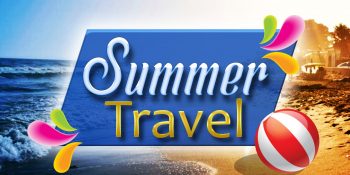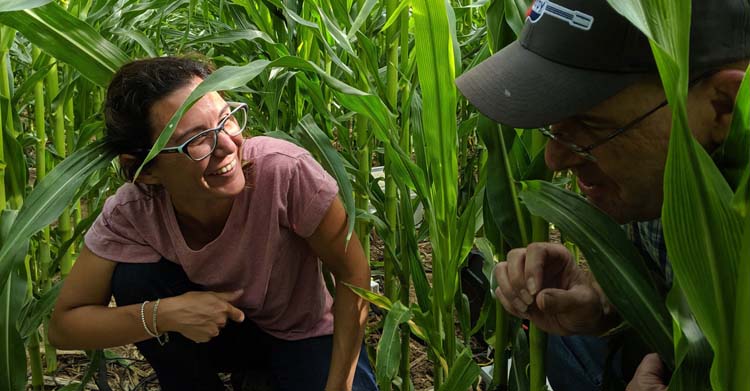Thought this would be the “summer without travel”? Think again: AAA forecasts Americans will take 700 million trips between July and September in its latest analysis of economic indicators and survey data. While that number is down nearly 15 percent from last year, marking the first decline in summer travel since 2009, the data indicate Americans are making travel plans – although they’re much different than in years past.
“When it comes to travel, two things are true: Folks want to get out and stretch their legs after months of “stay-at-home” orders, but they’re more cautious about travel than they’ve ever been,” said Skyler McKinley, director of public affairs for AAA Colorado. “For now, they’re setting aside extended vacations in favor of long weekend getaways – and they’re packing up the car to get there.”
All told, travelers will take 683 million car trips during the summer travel period – representing 97 percent of all summer travel. Year over year, car trips will decrease in total volume by just 3 percent. Air travel, meanwhile, will decline by about 74 percent over 2019, while rail, cruise ship, and bus travel will slide by 86 percent. The data strongly suggest that Americans view the automobile as their safest travel option, and that 2020 will be the summer of the road trip.
But for the pandemic, AAA would have projected a total of 857 million trips during the third quarter of 2020 in a 3.6 percent increase over last year. By this analysis, the pandemic wiped out nearly 150 million person-trips this summer. Interestingly, the share of travelers making plans 48 hours to 7 days prior to departure is significantly higher than normal, indicating that more people are deciding to “get up and go” at the last minute than in years past.
Denver Rising, Orlando Falls
Travelers are increasingly interested in exploring America’s great wide open by automobile as prominent cities that typically draw large crowds fall down the list. Denver has climbed to the top-searched city destination among AAA travelers, while Orlando has fallen from number one to number eight.
1. Denver, CO
2. Las Vegas, NV
3. Los Angeles, CA
4. Seattle, WA
5. Phoenix, AZ
6. Portland, OR
7. Myrtle Beach, SC
8. Orlando, FL
9. San Diego, CA
10. Nashville, TN
Travelers can plan out their travel in advance using AAA TripTik – which now includes comprehensive COVID-19 Travel Restriction mapping.
Road Trips & Traffic
In collaboration with INRIX, AAA analyzed the top 20 metropolitan areas and all states to estimate where travelers may run into traffic when they travel. Here’s the good news: The top 20 metros will remain below typical summer-travel traffic congestion, although a number of states could expect to see traffic congestion rise to normal commuter levels – though they’ll still be well below the usual summer traffic patterns.
Per AAA’s forecast, traffic in Denver and across Colorado is unlikely to present sustained congestion, though travelers should expect some hot spots.
Gas Prices
AAA expects the national average for a gallon of unleaded to average near $2.25 for the third quarter of 2020. That’s a 15 percent decline from the $2.66 average seen last summer, and the cheapest summer for filling up since 2016.
Colorado’s average sits at $2.41, down from $2.74 at this time last year. Motorists will pay a high of $2.88 in Vail and a low of $2.02 in Durango.
When at the pump, AAA recommends wearing disposable gloves or using a plastic sandwich bag to avoid touching the pump handle. When back in your car, be sure to clean your hands with sanitizer or wipes.
Know Before You Go
No matter where you’re going or how you’re getting there, AAA recommends considering these points before you go: • Visit AAA’s COVID-19 Travel Restrictions Map at TripTik.AAA.com for the latest state and local travel restrictions.
- Check the CDC’s COVID-19 data tracker, municipal and state health departments and local news for updates on coronavirus cases and continue to do so while on the road.
- Pack face coverings, gloves and cleaning supplies – like disinfecting wipes, hand sanitizer – and a thermometer.
- Take all necessary travel documentation, including health insurance cards. About the Forecast
Because of the pandemic’s impacts on travel, AAA did not release Memorial or Independence Day travel forecasts. AAA’s Q3 projections are based on economic forecasting and research by IHS Markit, a London-based business information provider. For the purposes of this forecast, the summer travel period is defined as July 1 through September 30. In cooperation with AAA, IHS Markit developed a unique methodology to forecast actual domestic travel volumes, using macroeconomic drivers such as employment; output; household net worth; asset prices including stock indices; interest rates; housing market indicators and variables related to travel and tourism, including prices of gasoline, airline travel and hotel stays. The complete AAA/IHS Markit forecast is available here.
Photo Credit: MGN Online
SPREAD THE NEWS
COMMENT, Like, Follow & SHARE @I70Scout
CURRENT EDITION
WEATHER & TRAFFIC PUZZLES RECENT NEWS ADVERTISE WITH US

